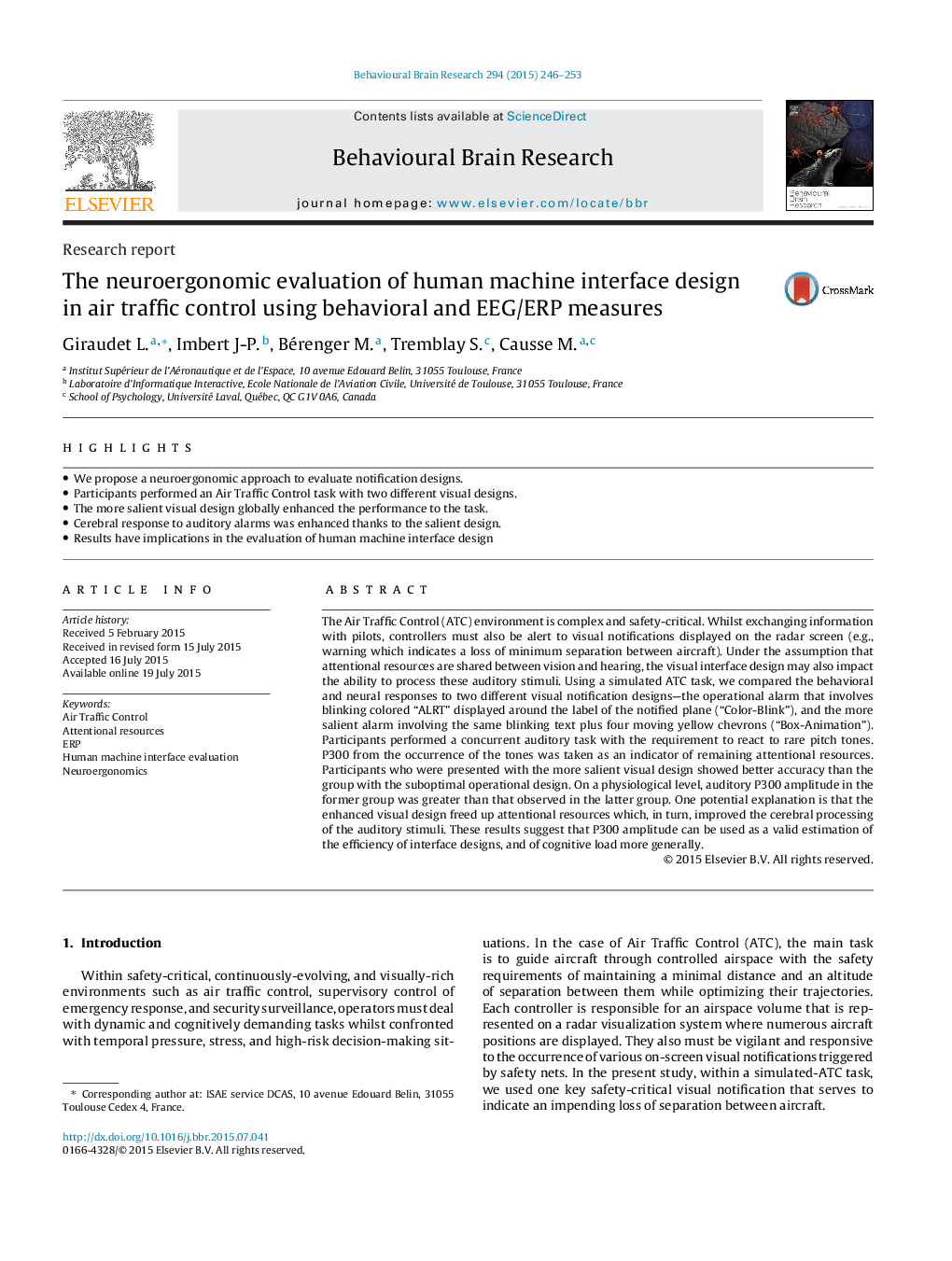| کد مقاله | کد نشریه | سال انتشار | مقاله انگلیسی | نسخه تمام متن |
|---|---|---|---|---|
| 4312457 | 1612938 | 2015 | 8 صفحه PDF | دانلود رایگان |

• We propose a neuroergonomic approach to evaluate notification designs.
• Participants performed an Air Traffic Control task with two different visual designs.
• The more salient visual design globally enhanced the performance to the task.
• Cerebral response to auditory alarms was enhanced thanks to the salient design.
• Results have implications in the evaluation of human machine interface design
The Air Traffic Control (ATC) environment is complex and safety-critical. Whilst exchanging information with pilots, controllers must also be alert to visual notifications displayed on the radar screen (e.g., warning which indicates a loss of minimum separation between aircraft). Under the assumption that attentional resources are shared between vision and hearing, the visual interface design may also impact the ability to process these auditory stimuli. Using a simulated ATC task, we compared the behavioral and neural responses to two different visual notification designs—the operational alarm that involves blinking colored “ALRT” displayed around the label of the notified plane (“Color-Blink”), and the more salient alarm involving the same blinking text plus four moving yellow chevrons (“Box-Animation”). Participants performed a concurrent auditory task with the requirement to react to rare pitch tones. P300 from the occurrence of the tones was taken as an indicator of remaining attentional resources. Participants who were presented with the more salient visual design showed better accuracy than the group with the suboptimal operational design. On a physiological level, auditory P300 amplitude in the former group was greater than that observed in the latter group. One potential explanation is that the enhanced visual design freed up attentional resources which, in turn, improved the cerebral processing of the auditory stimuli. These results suggest that P300 amplitude can be used as a valid estimation of the efficiency of interface designs, and of cognitive load more generally.
Journal: Behavioural Brain Research - Volume 294, 1 November 2015, Pages 246–253